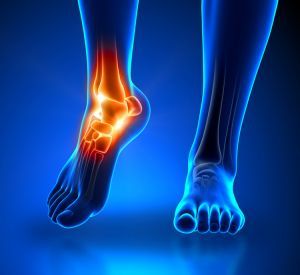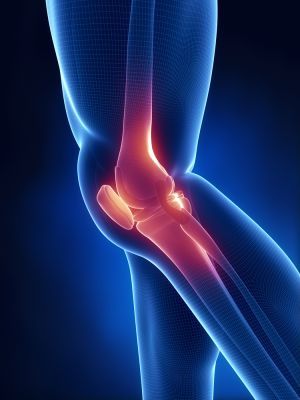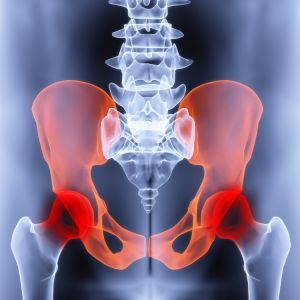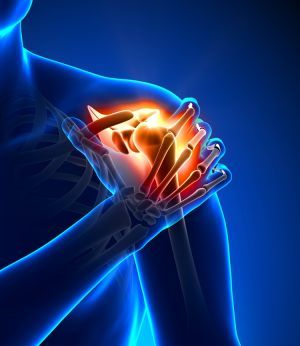Common training injuries: A comprehensive guide
MF’s comprehensive guide to common workout induced injuries and what you can do if you have one

Soreness is to be expected after an intense workout, but there’s a difference between the pain of a recovering muscle and the pain of incurring serious damage. Men’s Fitness has paired up with Musculoskeletal Physiotherapist Simon Rice to create a brief guide to some of the most common training injuries.
Ankle Injuries

Ankle Sprain
Athletes of all sports are prone to sprains, which are characterised by an inflamed, swollen, or bruised ankle. Sprains are injuries to the ligament surrounding the joints that hold bones together, usually caused by sudden pulling or stretching. Rice notes that ‘Research has shown calf strength and balance exercise can reduce your risk of these injuries. Adding some single leg balance exercise as part of your warm up before training can help reduce your injury risk’.
High Ankle Sprain
Whereas the common ankle sprain occurs when the ligament surrounding the ankle joint is pulled or stretched, high ankle sprains occur when the ligament above the joint is damaged. These take longer to heal than traditional ankle sprains and are most commonly associated with sports like skiing and football.
Plantar Faciitis
Excessive stretching of the thick band of tissue on the bottom of the foot is known as Plantar Fasciitis and can cause heel pain, especially during walking. Those with particularly flat feet or high arches are more susceptible to the injury, as well as those who wear shoes without proper arch support. Rice mentions that the injury is ‘characterised by pain that is worse first thing in the morning and improves after the first few steps’.
Get the Coach Newsletter
Sign up for workout ideas, training advice, reviews of the latest gear and more.
Suitable Product:
Mueller HG80 Ankle Support
The Mueller HG80 ankle support is specifically designed to provide compression and support for weak or sore ankles. The gel pads provide excellent additional support.
Knee Injuries

Cartilage injuries
Knee cartilage acts as a barrier between the two primary bones of the leg: the femur and the tibia. Injury to the cartilage can make movement painful and is caused by the sudden twisting of the knee, usually in tennis or football.
Mild knee arthritis
Whereas knee cartilage injuries tend to be sudden, arthritis of the knee known as osteoarthritis is the gradual wearing away of cartilage. Its symptoms are similar to that of knee cartilage injuries, causing pain and swelling upon movement.
Collateral ligament injuries
Ligaments such as the MCL and LCL, are thick bands of tissue that connect the femur and tibia together. Collateral ligament injuries occur when one or more of these bands tear, causing knee pain, swelling or locking. According to Rice, ‘Injuries to the MCL are more common and usually due to impact from the outside of the knee such as a soccer tackle’.
Suitable Product:
Stabilising Knee Support- RRP: £28.99
The PhysioRoom.com stabilising knee support provides excellent levels of comfort and support. Two lateral and medial flexible steel springs offer support to the knee joint, while the stabilising upper Velcro straps provide a customised fit for a secure fit and comfort. An extra-soft patella pad protects and stabilises the knee cap.
Groin injuries

Gilmore's Groin
Gilmore’s Groin is a common injury among athletes of all sports and occurs when the muscles that run from the abdomen down the thigh are torn. A progressive injury, Gilmore’s Groin usually has a mild start but gets worse without treatment.
Adductor Strain
The adductor muscles are the muscles of the inner thigh, which aid in activities like running or kicking. When one of these muscles is suddenly contracted, ruptures or tears can occur, causing what is known as an adductor sprain. Rice notes thatan adductor strain ‘often takes longer to rehabilitate than other muscle sprains and has a high injury of reoccurrence’.
Hip Flexor Strain
The hip flexor allows us to move our knees toward our chest and are strained when tension caused by rapid movement leaves the muscle torn. These injuries are most common in sprinting and football.
Suitable product:
Gilmore Support Shorts- RRP: £99.00
The Gilmore support shorts are ideal for athletes who suffer from groin, lower back and hamstring injuries. The Gilmore support shorts have been scientifically designed to aid core stability and provide support to the areas where most injuries of this type occur.
Shoulder injuries

Shoulder Impingement Syndrome
According to Rice, ‘The rotator cuff is a group of four muscles that has the role of keeping the arm centralized in the centre of the shoulder socket during movement. If there is an imbalance of the muscle in the shoulder or a small tear in the rotator cuff, the arm bone does not stay centralized in the joint during movement and can impinge on sensitive structures in the area, resulting in impingement syndrome. This is very common in swimmers, tennis players and people who are stronger in the muscles on the front of the body compared to the back’.
AC joint sprain
The AC joint makes shoulder movement possible by connecting the shoulder blade and the clavicle. When excessive force is placed on the AC joint and it is forced beyond its normal range of motion, an AC joint sprain may occur. Pain at the site is immediate upon injury but can intensify during heavy lifting or regular arm movement.
Rotator Cuff Injury
The rotator cuff is comprised of four tendons that work together to make shoulder movement possible. Rotator cuff injuries occur when these tendons become inflamed, resulting in pain upon movement, most often in swimmers and heavy lifters.
Suitable product:
The Neoprene Shoulder Support RRP: £28.99
The Neoprene Shoulder Support by Ultimate Performance is designed to encase an injured shoulder in as much support as possible whilst also acting as a compression aid during recovery. Providing stability and security throughout rehabilitation.
Wrist and Elbow injuries

Rheumatoid Arthritis
Rheumatoid arthritis is a condition in which the body’s immune system attacks the cells that surround the joints, resulting in swelling and reduced range of motion. The most common symptoms are stiffness at the joints and pain during normal movement.
Tendonitis
Tendons are responsible for attaching muscle to bone and aid in movement as muscles contract. Tendonitis occurs when the lining around the tendon becomes torn due to overuse or excess strain, leading to swelling, pain and weakness.
Bursitis
Bursas are sacs that act as a barrier between tendons and bones during movement. When these bursas become inflamed due to injury or repeated movement, bursitis occurs and causes swelling and pain in the damaged area (usually shoulders, elbows, knees or hips).
Suitable product:
Fireactiv Wrist £29.95, Elbow £34.95
FireActiv is a secure joint and muscle support which comes with deep-heat generating pads. Special bio-ceramic heat reflective particles are fused in to the fibres of the heat pads which, when placed on the skin, radiate heat back in to the body.
